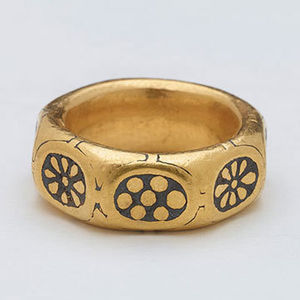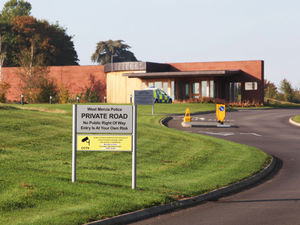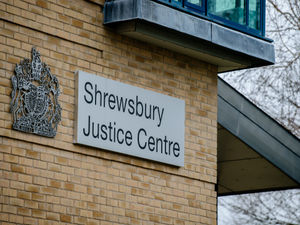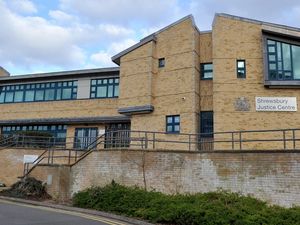Two men found guilty of trying to sell part of Viking hoard found close to Shropshire border
Two men have been found guilty of trying to illegally sell items that were believed to be a part of an historically important Viking hoard that was found close to the Shropshire border.
The 44 coins, valued at approximately £766,000, are believed to be part of the Herefordshire Hoard that was found near Leominster in 2015 by metal detectorists who failed at the time to report their find as a treasure.
Following a police operation by the Durham Constabulary, the coins are now safely in the hands of the British Museum where their significance can be studied further by historians.
Only around a third of the Herefordshire Hoard has been recovered.

The coins are believed to be of major historical significance surrounding the relationship between Alfred the Great of Wessex and his less well-known contemporary Ceolwulf II of Mercia.
At Durham Crown Court on Thursday, Craig Best, 46, of South View, Bishop Auckland, County Durham, and 75-year-old Roger Pilling, of Loveclough, Rossendale, Lancashire, were found guilty of conspiracy to convert criminal property and possession of criminal property between September 2018 and May 2019.
In 2018, Best contacted a US-based professor, who had a passion for ancient coins, and tried to interest him in buying some of the hoard.
Unsure if they were real, the academic contacted a UK-based expert.
Discussions with the British Museum followed about the potential historical value of the coins before Durham Constabulary was informed and an investigation was launched.
Experts say the coins which were recovered during an extensive Durham Constabulary-led investigation, have changed the shape of British history.

King Alfred inflicted a major defeat on the Vikings in AD 878 and experts from the British Museum believe the coins belong to an undeclared hoard consistent with the location of the Viking army at that time.
The hoard is so important because it fills a gap in the understanding of history at this time.
Until now accounts have suggested Ceolwulf of Mercia as a “puppet” of the Vikings and a minor nobleman rather than a proper King in his own right.
However, the coins tell a very different story and show two rulers standing side by side as allies and peers.
The haul included two extremely rare examples of two-headed coins bearing images of both Alfred of Wessex and Ceolwulf.
The coins are believed to have been discovered in Leominster, Herefordshire, in a multimillion-pound hoard found by two metal detectorists in 2015, who did not declare the find as "treasure" and instead sold items to dealers. In 2019, they were sentenced to a total of more than 18 years, following an investigation carried out by West Mercia Police.
The Treasure Act 1996 defines treasure as: One of at least two coins in the same find which are at least 300 years old at that time and contains at least 10 per cent precious metal.
OR when found is one of at least ten coins in the same find which are at least 300 years old at that time are deemed ‘treasure’ and must be reported to the authorities.
Officers from Durham Constabulary with the support of the North East Regional Organised Crime Unit (NEROCU) and Lancashire Constabulary, recovered the coins from properties in County Durham and Lancashire during a police investigation in 2019.
Dr Gareth Williams, curator of Early Medieval Coins and Viking Collections at the British Museum, said: “The coins in this case have already begun to transform our knowledge and understanding of the political situation of the late ninth century.
“The coins show beyond any possible doubt that there was a political and economic alliance between Alfred and Ceolwulf II.
“Together the two kings carried out a major reform of the coinage, introducing high-quality silver coins, with the Two Emperors design symbolising this alliance, followed by a second joint coinage.
“As more coins emerge, it is clear that this monetary alliance lasted for some years, while an individual coin from the Durham hoard proves that the more symbolic Two Emperors type was the earlier of the two.”
Detective Superintendent Lee Gosling, Senior Investigating Officer for Operation Fantail, at Durham Constabulary, said: “This is an extremely unusual case, as it’s not very often we get the chance to shape British history.
“It is astonishing that the history books need re-writing because of this find.
“These coins come from a hoard of an immense historical significance relating to the Vikings and we are delighted that they are now with the British Museum.
“This has been a lengthy and complex investigation and I would like to thank the Durham Major Crime Team, specialist officers, historical experts, Crown Prosecution Service and prosecuting counsel in this case for all their help.
“Hopefully this verdict sends out a message that the actions of Best and Pilling were denying the country of crucial historical knowledge and that organised acquisitive crime will not be tolerated.
“As this case shows, even if criminals travel across police force boundaries, they are still very much within reach.”
Detective Chief Inspector Phil Cleugh, of the North East Regional Organised Crime Unit (NEROCU), said: “Not only does the recovery of these coins hold a great significance for our history but it is yet another example of how, with partnership working, we can bring organised criminals before the courts and continue protecting those they’re looking to exploit.
“This outcome demonstrates the resources at our disposal and our ability to take swift action – and our work won’t stop here.”
Mr Pilling and Mr Best were remanded in custody and will be sentenced at Durham Crown Court, on Thursday, May 4.




